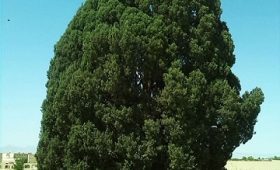Masjid Jameh of Nodushan: A Historical Jewel in Yazd Province
Introduction:
The Jameh Mosque of Nodushan (مسجد جامع ندوشن) is one of the historical landmarks located in the small town of Nodushan, situated 70 kilometers north of Yazd. The town of Nodushan has a rich history, dating back more than 5,000 years. The mosque itself stands as a testament to the region’s deep historical roots and cultural heritage, showcasing the architectural brilliance of early Islamic Iran. The Jameh Mosque of Nodushan is not only a religious site but also a monumental piece of history that has witnessed the passage of time, offering a glimpse into the cultural and architectural evolution of the region.
Historical Significance:
Nodushan has a long and storied history, with settlements believed to date back over 5,000 years. The Jameh Mosque is an integral part of this ancient town, serving as a religious and communal center for the people of the area. The mosque’s construction reflects the enduring legacy of Islamic architecture and religious practices in the region, dating back to the early Islamic period.
Architectural Features:
- Early Islamic Architecture: The Jameh Mosque of Nodushan is a prime example of early Islamic architecture in Iran. The mosque’s design incorporates traditional elements such as arches, domes, and intricate tile work, which were characteristic of Islamic architecture during the time it was built. The layout of the mosque is designed to accommodate communal prayers and gatherings, with a large prayer hall, a central courtyard, and a prominent minaret that rises above the structure.
- Courtyard and Prayer Hall: One of the most striking features of the Jameh Mosque of Nodushan is its spacious central courtyard, which is surrounded by a covered arcade. The courtyard serves as a gathering place for worshippers and visitors, providing a peaceful environment for reflection and prayer. The prayer hall, located on the north side of the courtyard, is characterized by its simple yet elegant design, with tall columns and an ornate mihrab (a niche indicating the direction of Mecca) that serves as the focal point for prayer.
- Minaret: The mosque’s minaret is another important feature of the structure. Standing tall above the mosque, it is both a functional and symbolic element of the mosque’s design. The minaret serves as a call to prayer, signaling the time for the community to gather for worship. Its height and architectural style make it a landmark of the town, visible from a distance and adding to the mosque’s aesthetic appeal.
- Decorative Elements: While the mosque’s design is relatively simple compared to some larger mosques in Iran, it still features several decorative elements that highlight the beauty of Islamic art and architecture. The mosque’s walls and arches are adorned with intricate patterns and calligraphy, reflecting the artistic traditions of the time. The use of natural materials, such as mud brick and stone, is common in the region, and these materials give the mosque a rustic yet charming appearance.
- Restoration and Preservation: Over the centuries, the Jameh Mosque of Nodushan has undergone various stages of restoration and preservation. Despite the passage of time and natural wear, the mosque remains an important religious and cultural site. Efforts to preserve the mosque’s historical integrity have been made, ensuring that future generations can experience its historical and architectural significance.
Cultural and Religious Importance:
The Jameh Mosque of Nodushan is not only a historical monument but also a living symbol of the region’s religious and cultural heritage. The mosque continues to serve as a place of worship for the local community, hosting regular prayers, religious ceremonies, and communal gatherings. Its enduring presence reflects the strong connection between the people of Nodushan and their religious and cultural traditions.
The mosque also holds a significant place in the history of Islamic architecture in Iran. It serves as an example of the evolution of mosque design, showcasing how architectural styles adapted to the local environment and religious practices. The mosque’s design, while simple, reflects the Islamic principles of functionality, unity, and community.
Tourism and Educational Value:
Today, the Jameh Mosque of Nodushan is a popular destination for tourists and scholars alike. Visitors are drawn to the mosque for its historical and architectural value, as well as its serene atmosphere. The mosque provides an opportunity to learn about the region’s history and the development of Islamic architecture in Iran.
The mosque is also an important educational resource for those interested in the study of early Islamic architecture. Scholars and students of architecture visit the mosque to examine its design, materials, and construction techniques, gaining insight into the architectural practices of the time.
Conclusion:
The Jameh Mosque of Nodushan is a significant historical and cultural landmark in Yazd province. Its long history, simple yet elegant design, and religious importance make it a valuable piece of Iran’s architectural heritage. The mosque not only serves as a place of worship but also as a reminder of the region’s rich cultural and architectural traditions. For visitors, the mosque offers a unique opportunity to explore the past while experiencing the enduring beauty of Islamic architecture in a serene and historic setting.



